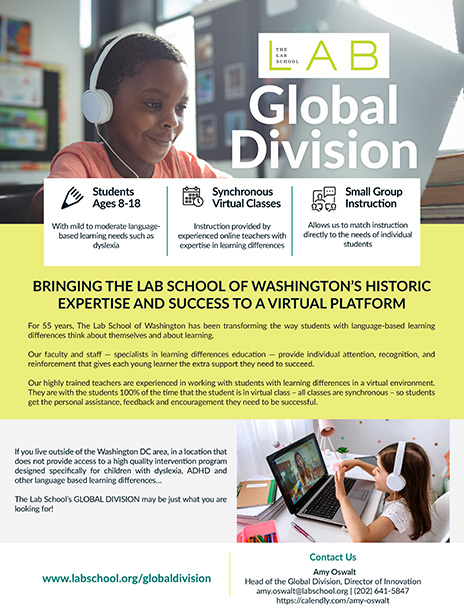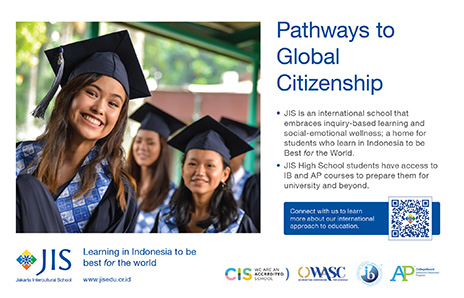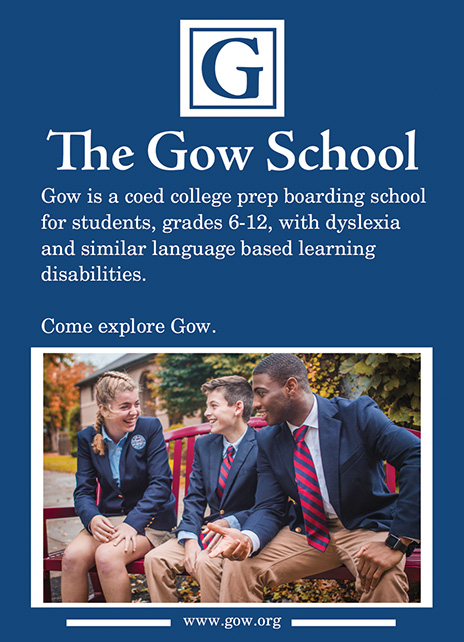Special Needs Education Allowances: An Update
What’s changed with SNEA? The Global Community Liaison Office finds out.
BY REBECCA MCPHERSON
Navigating the process of qualifying for the Special Needs Education Allowance (SNEA) can be overwhelming for Foreign Service families. Understanding the SNEA eligibility process is imperative during the bidding process and while transitioning from school to school overseas; so is knowing the partners who can help ensure your child’s needs are met.
If your child has suspected or identified educational needs, work together with overseas medical staff and the Office of Child and Family Programs (CFP) to determine the appropriate educational plan and apply for SNEA, which can help you effectively implement that plan.
In June 2020, the Office of Inspector General (OIG) conducted an extensive audit of SNEA and made a total of 15 recommendations. Changes include updates to both the Department of State Standardized Regulations (DSSR) that governs allowances and benefits for U.S. civilians assigned abroad and to the Foreign Affairs Manual (FAM).
The November 2022 revisions to DSSR 276.8 and 3 FAM 3280 include clarifying the Bureau of Medical Services (MED)/CFP authorization and appeals process and eligibility requirements, expanding the list of required documentation, spelling out the steps in the SNEA appeal process, listing the expenses that are and are not covered, and changing the methodology for SNEA rate calculations.
The Global Community Liaison Office (GCLO) is here to guide parents to the information and resources that will help you understand the available options for meeting your child’s educational needs.
Recently, GCLO’s Rebecca McPherson sat down with Dr. Jason Coe, director of Overseas Mental Health Services; Nancy Kelly, CFP Education Program specialist; and Michele Schurtz, CFP program manager/nurse consultant in MED’s Office of Child and Family Programs (MED/CFP) as well as with a team from the Office of Allowances (A/OPR/ALS) to clarify some of these changes.
The Expansion of 3 FAM 3283
GCLO: The requirements in 3 FAM 3283 for SNEA eligibility were expanded in November 2022. Why were they expanded, and what are the new eligibility requirements?
MED/CFP Team: The OIG identified that our SNEA process was causing confusion. The program needed to be more transparent on how and when to apply for SNEA funding. Some families were not aware that they need to reapply annually for SNEA or that the SNEA authorization is post-, school-, and provider-specific.
Of course, this confusion is not what we want. We want access to this program to be as clear as possible, and so we expanded 3 FAM 3283 and clarified eligibility requirements. In CFP, we now follow a clearly defined SNEA application review time frame. For example, families are to apply for SNEA funding for the current 2022-2023 school year by Dec. 31, 2023.
We want access to this program to be as clear as possible.
–MED/CFP
GCLO: There are now significantly more requirements for SNEA to accept an Individual Education Plan (IEP) or an Individual Learning Plan (ILP). Who should families reach out to in CFP to make sure their child’s IEP will meet the new requirements?
MED/CFP Team: If a family is not actively corresponding with a member of the CFP team, I would encourage them to email MEDCFP@state.gov. We are happy to provide guidance.
The revised 3 FAM 3284 details the required elements of the IEP/504 Plan or the IEP/ILP equivalent. The goal of this revision is to detail the specific, required information parents should include in the learning plan/equivalent.
GCLO: What does the Special Needs Education Allowance Committee do?
MED/CFP Team: The deputy under secretary for management created the Special Needs Education Allowance Committee, or the SNEA Committee, in November 2018 in response to the OIG audit.
This committee works at a policy level, reviewing existing SNEA procedures and reporting to the under secretary for management, as needed. The SNEA Committee is not directly involved in the CFP team review or in processing SNEA requests.
GCLO: What changes were made to the SNEA Appeal Process and why?
MED/CFP Team: A formalized SNEA appeal process was developed and implemented in 2020 as a result of the OIG SNEA audit and recommendations. Families now can initiate a SNEA appeal when educational services required are not approved as part of the SNEA review.
The SNEA appeal process, outlined in 3 FAM 3289, provides detail and transparency regarding eligibility, steps to initiate an appeal, the composition of the SNEA Medical Review Panel, and procedures in reviewing cases and determining eligibility.
Whatever is necessary for the child’s education is allowed.
–ALS
SNEA Allowances
GCLO: I understand that the changes to DSSR 274.12 on Special Needs Education Allowances (SNEA) were a result of an OIG audit. What was the impetus for the OIG audit, and what did it reveal?
Office of Allowances (ALS) Team: A number of issues had been reported to the OIG about the SNEA process. During their audit, OIG found that regional bureaus would allocate the full published SNEA amount per child and that posts were utilizing the end-of-year SNEA excess amounts for other post obligations.
This is not how the program is supposed to operate. The OIG determined that a more rigorous process was necessary to make sure the money went where it was intended and that the process would better meet the financial needs of parents applying for the allowances for their children.
GCLO: Can you explain what changed in the methodology for calculating SNEA rates?
ALS Team: Previously, the “At Post” SNEA rate was an average of U.S. and foreign schools able to address special needs plus a local transportation component. With the recent changes, the “At Post” SNEA is now equivalent to the DSSR Section 920 “At Post” Education Allowance for the employee’s foreign post of assignment and the child’s grade level.
MED/CFP reviews the child’s ILP or equivalent and approves services required in the ILP that may not be available through the school. Posts may approve up to 50 percent above the “At Post” SNEA rate for allowable expenses. When necessary, Supplementary Instruction can be funded up to $4,100, in addition to the “At Post” SNEA rate.
The “Home Study/Private Instruction/Virtual Schooling” (HS/PI/VS) SNEA rates are now equivalent to the HS/PI/VS rates under DSSR 274.12b (K–6 $10,500 and 7–12 $21,500, as of March 23, 2023).
MED/CFP reviews the child’s ILP or equivalent and approves funds for additional services required in the ILP. Posts may reimburse for allowable expenses up to 50 percent above the HS/PI/VS SNEA rate. Previously, the HS/PI/VS SNEA rate was the same as the “At Post” SNEA rate.
The methodology for the “Away from Post” SNEA rate remains the same: an average of U.S. and foreign boarding schools attended by children with special needs plus an international transportation component to get the child between their school and the employee’s foreign post of assignment.
The current amount, as of March 23, 2023, is $95,400 annually. As above, MED/CFP reviews each child’s ILP or equivalent and approves additional services required in the ILP. Posts may reimburse for allowable expenses up to 50 percent above the “Away from Post” SNEA rate.
A more rigorous process was necessary to make sure the money went where it was intended.
–ALS
GCLO: Is there a new cap for SNEA reimbursements? It appears that the services are capped at 150 percent of the standard “At Post” education allowance. What if the services for a child cost more than that?
ALS Team: No, services are not capped at 150 percent of the standard “At Post” education allowance. The DSSR provides guidelines for parents to request an allowance above the published rate; however, whatever is necessary for the child’s education is allowed.
The first 50 percent above the chosen education allowance (At Post, Away from Post, or HS/PI/VS) may be reimbursed at the post level for required services listed in the child’s ILP or equivalent, as well as additional allowable expenses (listed in DSSR 276, 277, and 960).
If additional funding is necessary, post sends a request to us in the Office of Allowances. If MED/CFP is not copied on the request, then we will communicate with them to confirm the dollar amount and make sure we are able to financially meet a child’s educational needs.
The Role of the Office of Overseas Schools
GCLO’s Education and Youth Team also spoke with the Office of Overseas Schools (OS) to learn about the role regional education officers (REOs) play in helping meet the needs of families with children who have special education needs. The State Department’s six REOs are all former educators, principals, or heads of international schools, and they are full of knowledge about the assisted schools overseas that they support.
The term “assisted” means that the school receives an annual grant from the State Department to assist with operations and programs and to help them offer educational practices similar to those in U.S. schools. Parents can contact the REO to discuss options, ask questions about specific schools, receive guidance, and help ensure that their child’s needs can be met at a particular school at post.
To understand these schools and programs, and where each school is in their journey to build special needs capacity, we encourage families to reach out to the REOs.
–OS
GCLO: Most of the Department of State’s assisted schools are limited in their ability to meet the special education needs of a growing number of Foreign Service children. What steps is your office taking to improve the availability of accommodations for moderate to severe learning needs?
Overseas Schools Team: Improving the availability of special needs programming is at the top of our office’s strategic plan. Families are encouraged to work with the REOs as early as possible in their bidding and assignments process.
While we support American-style education through our annual grants program, State does not own or operate any of these schools. We provide guidance and best practices, but we are not involved in the day-to-day policies or decisions at these independent institutions.
Our team’s advocacy has increased the number of assisted schools willing to consider the applications of mild learning needs from approximately 20 percent to 98 percent. This work is just the start.
Next, we hope to increase the level and diversity of needs served. To understand these schools and programs, and where each school is in their journey to build special needs capacity, we encourage families to reach out to the REOs.
Understanding the SNEA process and ensuring children are receiving the services they need is an important part of the process as families make decisions on their moves from post to post. GCLO aims to inform and connect families to resources that will help with those transitions. We encourage you to reach out directly to the Office of Allowances (AllowancesO@state.gov), MED’s CFP Team (MEDCFP@state.gov), and the Office of Overseas Schools (OverseasSchools@state.gov) with questions or to ask for more information.
We also encourage families to contact our Education and Youth Team at GCLOAskEducation@state.gov, by phone at (202) 647-1076, and visit them online at www.state.gov/glco/education.
Families may also want to read 3 FAM 3280 SNEA and the DSSR 270 Education Allowance.
When sharing or linking to FSJ articles online, which we welcome and encourage, please be sure to cite the magazine (The Foreign Service Journal) and the month and year of publication. Please check the permissions page for further details.
Read More...
- 3 FAM 3280: Special Needs Education Allowance
- “What’s New with Special Education Allowances?” by Charlotte Larsen, The Foreign Service Journal, June 2021
- “What You Need to Know: Returning to U.S. Public Schools with Special Education Needs” by Charlotte Larsen and Rebecca McPherson, The Foreign Service Journal, December 2022










